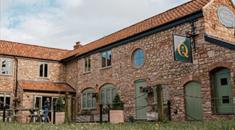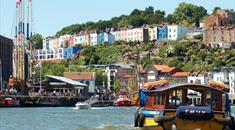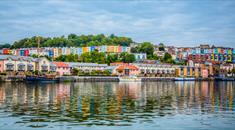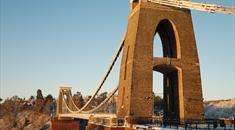As capital of South West England, Bristol makes a perfect base to explore the historical wonders of the region. Here you’ll find ancient countryside and world-famous landmarks that sit proudly alongside their diverse and unique UNESCO World Heritage Site counterparts such as the Pyramids of Egypt and Australia’s Great Barrier Reef.
So why not add a few extra days onto your stay in the city for some exciting and highly photogenic day trips? The following UNESCO World Heritage Sites are just a short bus, train journey, car ride or cycle away!
Make like the Romans in Bath
Bath, with its Roman archaeology and hot springs, 18th century town planning and beautiful setting is the only UK city to be designated a UNESCO World Heritage Site. No visit to the city is complete without a stop in at the Roman Baths where you can explore the spectacular bathing complex (the hot springs are the only ones in Britain), magnificent temple and learn more about Roman life through interactive exhibits, costumed characters and family activity trails. Be sure to leave time to visit the Jane Austen Centre, which celebrates one of Bath’s most famous residents before a rejuvenating session at Thermae Bath Spa’s open-air rooftop pool, complete with jaw-dropping views over the city and its stunning honey-coloured Georgian architecture.
How to get there from Bristol:
By bike: If you’re feeling energetic, you can hire a bike and cycle a lovely flat 13 miles/21km along the Bristol and Bath Railway Path to reach the city.
By train: Services run from Bristol to Bath Spa every 10 minutes and take a mere 12-15 minutes.
By bus: There is an hourly direct bus link from Bristol airport to Bath city centre. You can also catch a regular bus (X39 or 376) from Bristol city centre – see the First bus website for more info.
By car: Approximately 45 minutes via the A4.
.jpg)
Image - Roman Baths, Bath
Discover the myths and mysteries of Stonehenge
Prehistoric monument Stonehenge, run by English Heritage, is one of the most famous wonders of the world. Its orientation on the rising and setting sun, as well as its pagan and spiritual significance are part of its mythical draw and thousands gather at the stones to celebrate the Summer and Winter solstice, and Spring and Autumn Equinox every year. How and why it was built this way still remain a mystery to this day. Explore the incredible ancient landscape surrounding the iconic Stone Circle – home to other primeval monuments, discover the reconstructed Neolithic houses and come face to face with a 5,500-year-old man. For a truly magical experience, visit at dawn or dusk for an inner circle tour minus the crowds.
How to get there from Bristol:
By train: Trains from Bristol to Salisbury take around an hour and 10 minutes - see www.GWR.com for more info.
By bus: From Salisbury there is a dedicated year-round bus service to Stonehenge (you can buy tickets that include bus travel and entrance fee). The bus also passes the Iron Age hill fort at Old Sarum and Salisbury is well worth exploring, particularly the Cathedral and its copy of the Magna Carta. Stonehenge buses leave from Salisbury train station on the hour from 10am-4pm (more frequently in summer), it takes about 45 mins to get to Stonehenge.
By car: One and a half hours from Bristol.
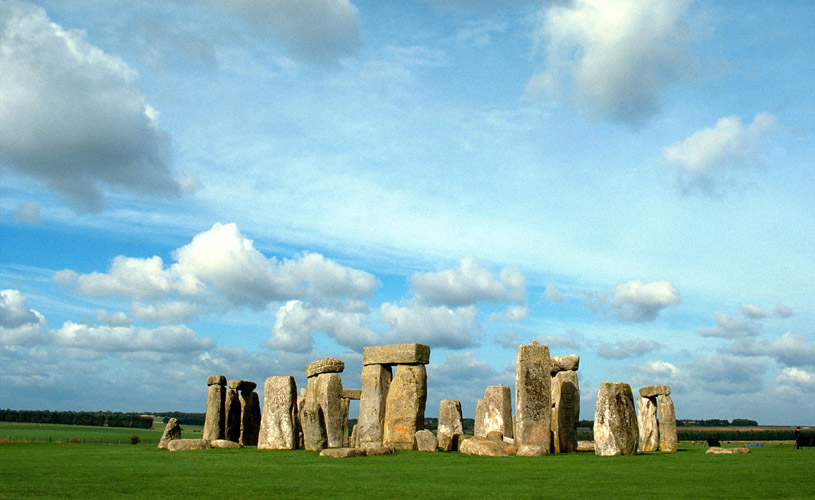
Travel back to prehistoric times in Avebury
World Heritage Site Avebury, run by the National Trust on behalf of English Heritage, is one of the marvels of primeval Britain. The largest megalithic stone circle in the world, it was built over 4,500 years ago (making it older than its more famous cousin Stonehenge). The site forms part of an incredible landscape of ancient ceremonial sites which include West Kennet Avenue, West Kennet Long Barrow, The Sanctuary, Windmill Hill and the mystical Silbury Hill (Europe's tallest prehistoric burial ground) - many of which can be reached on foot from the village of Avebury.
By car: Around an hour away from Bristol via the M4.
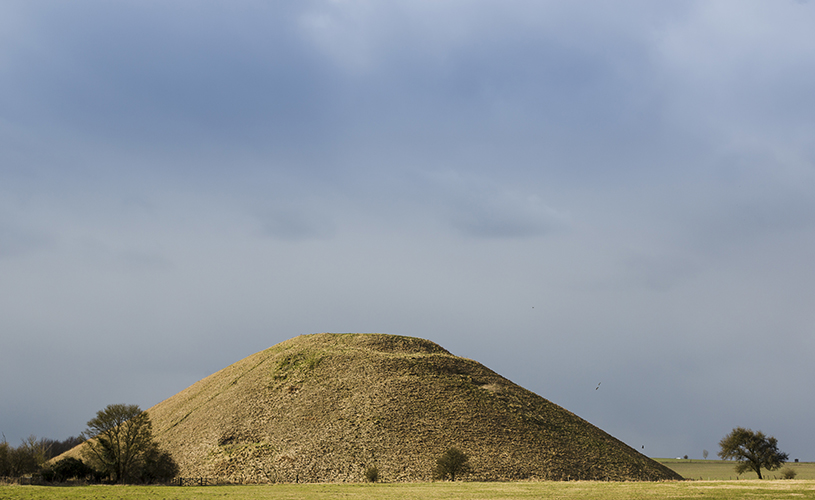
Image - Avebury World Heritage Site, credit VisitEngland, Iain Lewis
Go on a landscape adventure through time on the Jurassic Coast
The Jurassic Coast, which spans 95 miles of beautiful Dorset and Devon coastline is the first ever site to be inscribed as a 'natural' World Heritage Site. The dramatic rock cliffs and rock formations are filled with fossils and provide an almost continuous geological 'walk' back in time, through 185 million years of the Earth's history. Go for unspoilt countryside, sandy beaches, English seaside towns, amazing natural landmarks, brilliant family attractions and ancient castles in the area.
By car: Dorset is around a two hour drive from Bristol via the A37.
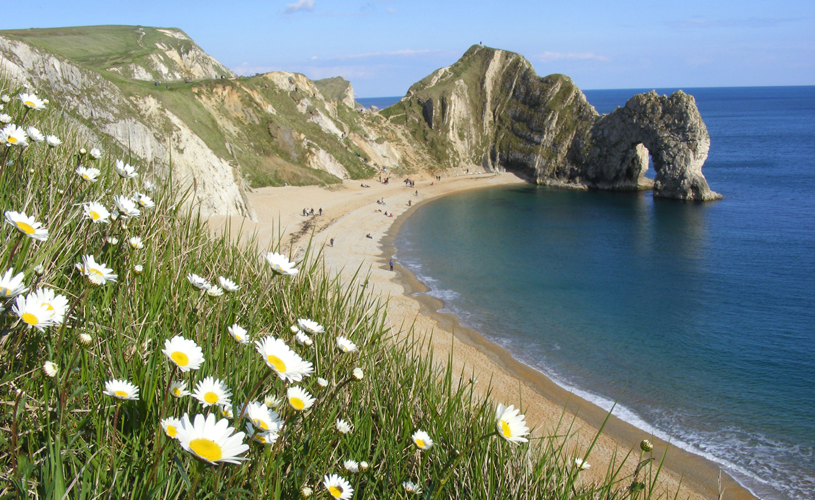
Image - Durdle Door, Wareham, credit VisitDorset, VisitEngland
Blaenavon Industrial Landscape
Nestled in Welsh countryside, at the gateway to the South Wales Valleys and lying partly within Brecon Beacons National Park, the town of Blaenavon was the world’s major producer of iron and coal in the 19th Century and formed part of the birthplace of the Industrial Revolution. The area is testimony to the undertaking of miners and ironworkers of the past and was inscribed as a UNESCO World Heritage Site in 2000. Explore the furnaces, quarries, railway systems, ironworkers’ cottages and other elements needed for the iron and coal industry in the Big Pit National Coal Museum, Blaenavon Ironworks, the World Heritage Centre and Blaenavon Heritage Railway, all just a few minutes’ drive or walk from each other. The surrounding landscape is also perfect for walking, cycling and mountain biking enthusiasts.
By train: From Bristol Temple Meads catch the GWR service to Cardiff Central and alight at Newport (40 minutes). Walk to the Market Square (6 minutes) and catch the X24 Gold to Blaenavon, alighting at Curwood (1 hour).
By bus: Take the National Express coach (202 Swansea), to Newport from Bristol Bus and Coach Station, which takes 40 minutes. Walk to the market Square (3 minutes) and catch the X24 Gold to Blaenavon, alighting at Curwood (1 hour).
By car: About an hour's drive away from Bristol.
_resized.jpg_tmp.jpg)
Image source www.visitblaenavon.co.uk
Blenheim Palace
A masterpiece of Baroque architecture which sparked the beginning of the English Romantic movement, Blenheim Palace was built by the nation between 1705 and 1722 to honour one of its heroes John Churchill, the first Duke of Marlborough. The breath-taking building is an exemplary design by John Vanbrugh and Nicholas Hawksmoor, two of England’s most notable architects, while Lancelot ‘Capability’ Brown is to thank for its stunning landscaped Park, considered to be a ‘naturalistic Versailles’. Enter the birth place of Sir Winston Churchill and explore the gilded State Rooms, magnificent stonework, priceless collection and awe-inspiring gardens. Back in Bristol, you can see more of Vanbrugh’s and Brown’s handiwork at Kings Weston Estate.
By train: From Bristol Temple Meads, take the GWR service to Oxford (90 minutes), then hop on a direct bus from the station to Woodstock with Stagecoach (40 minutes).
By car: around an hour and a half from Bristol.
Image - Blenheim Palace, credit https://twitter.com/BlenheimPalace
Read more
Pin it for later:




 to add an item to your Itinerary basket.
to add an item to your Itinerary basket.












